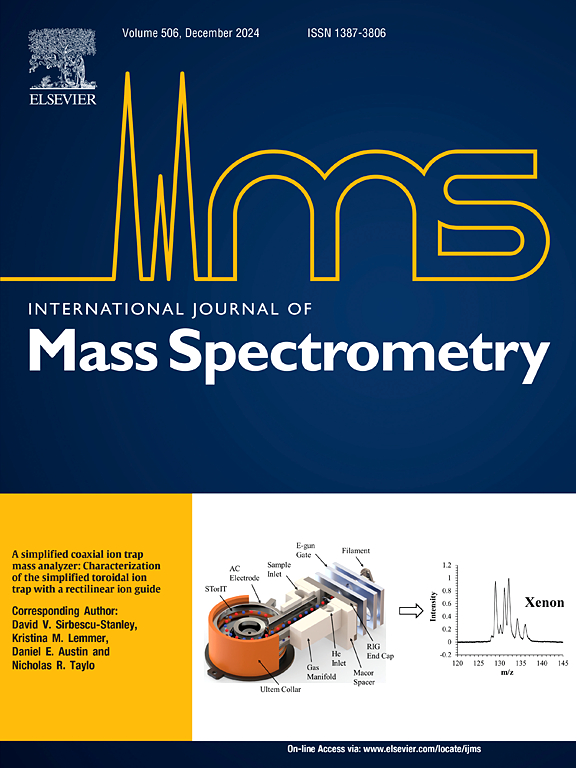An adaptive EEMD-machine learning algorithm for multi-matrix drug concentration prediction using miniature mass spectrometry
IF 1.7
3区 化学
Q3 PHYSICS, ATOMIC, MOLECULAR & CHEMICAL
引用次数: 0
Abstract
In this study, an innovative approach combining Machine Learning (ML) with Ensemble Empirical Mode Decomposition (EEMD) was proposed to predict lamotrigine concentrations in actual samples, improving detection performance in complex matrices. EEMD decomposed the mass spectrometry data to extract Intrinsic Mode Functions (IMFs), enabling separation of noise from key signal features. Ridge Regression (RR) addressed multicollinearity among high-dimensional IMF features and enhanced model generalization via L2 regularization. ML was further applied to optimize the key EEMD parameter (ensemble number K),thereby improving both decomposition quality and prediction accuracy. Experimental validation showed that the method achieved over 90 % prediction accuracy in three types of blind samples (PBS, rabbit blood, and human matrix), with improved Relative Standard Deviation (RSD). These results confirm the method’s precision and robustness in diverse biological matrices. Compared to traditional techniques, the proposed approach delivers marked improvements in both accuracy and stability, can supporting more reliable drug concentration monitoring for clinical applications.

微型质谱法多基质药物浓度预测的自适应eemd -机器学习算法
在这项研究中,提出了一种结合机器学习(ML)和集成经验模式分解(EEMD)的创新方法来预测实际样品中的拉莫三嗪浓度,提高了复杂矩阵中的检测性能。EEMD对质谱数据进行分解,提取本征模态函数(IMFs),实现了噪声与关键信号特征的分离。Ridge回归(RR)解决了高维IMF特征之间的多重共线性问题,并通过L2正则化增强了模型的泛化。进一步应用ML对EEMD关键参数(集合数K)进行优化,提高了分解质量和预测精度。实验验证表明,该方法对3种盲样(PBS、兔血和人基质)的预测准确率达到90%以上,相对标准偏差(RSD)有所提高。这些结果证实了该方法在不同生物基质中的精确性和鲁棒性。与传统技术相比,该方法在准确性和稳定性方面都有显著提高,可以为临床应用提供更可靠的药物浓度监测。
本文章由计算机程序翻译,如有差异,请以英文原文为准。
求助全文
约1分钟内获得全文
求助全文
来源期刊
CiteScore
3.60
自引率
5.60%
发文量
145
审稿时长
71 days
期刊介绍:
The journal invites papers that advance the field of mass spectrometry by exploring fundamental aspects of ion processes using both the experimental and theoretical approaches, developing new instrumentation and experimental strategies for chemical analysis using mass spectrometry, developing new computational strategies for data interpretation and integration, reporting new applications of mass spectrometry and hyphenated techniques in biology, chemistry, geology, and physics.
Papers, in which standard mass spectrometry techniques are used for analysis will not be considered.
IJMS publishes full-length articles, short communications, reviews, and feature articles including young scientist features.

 求助内容:
求助内容: 应助结果提醒方式:
应助结果提醒方式:


